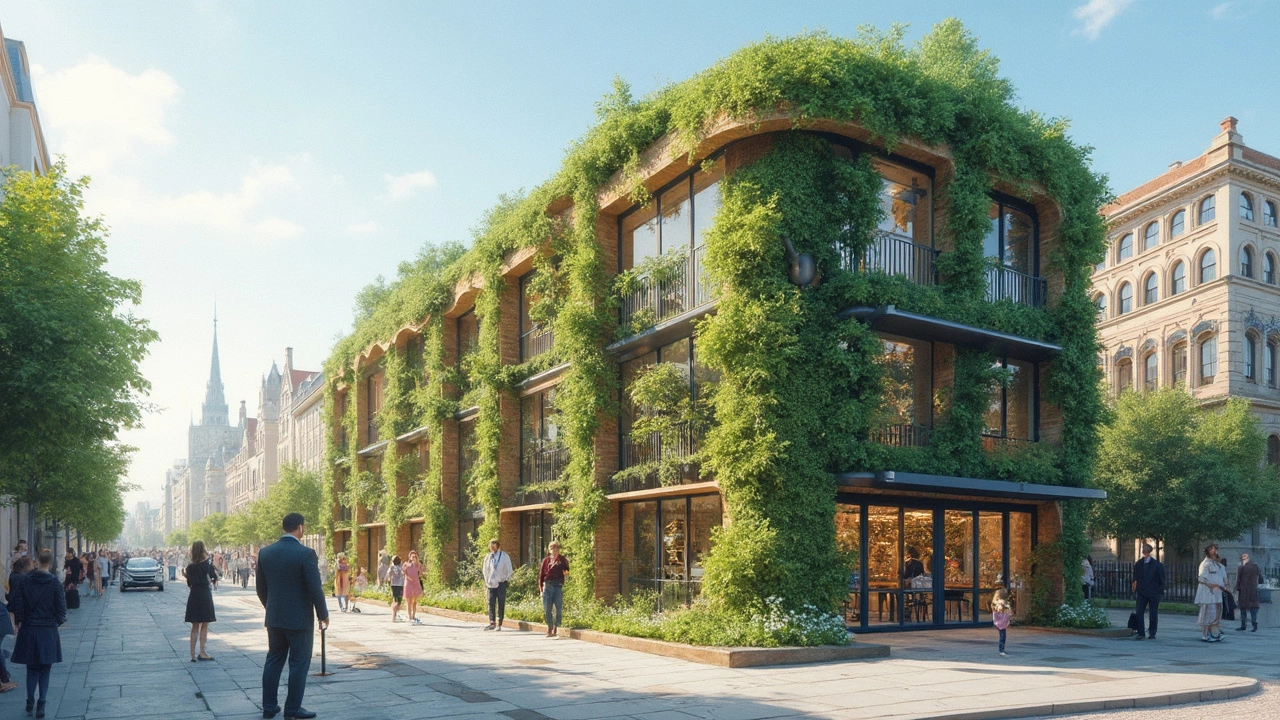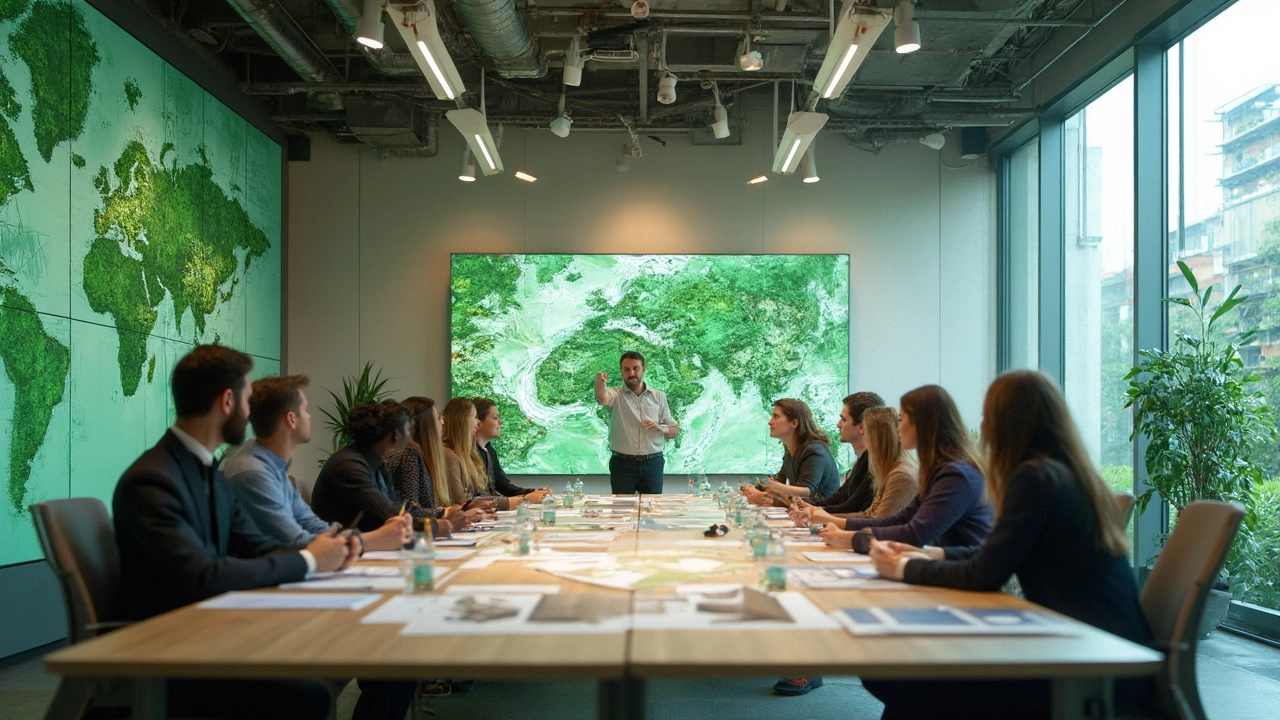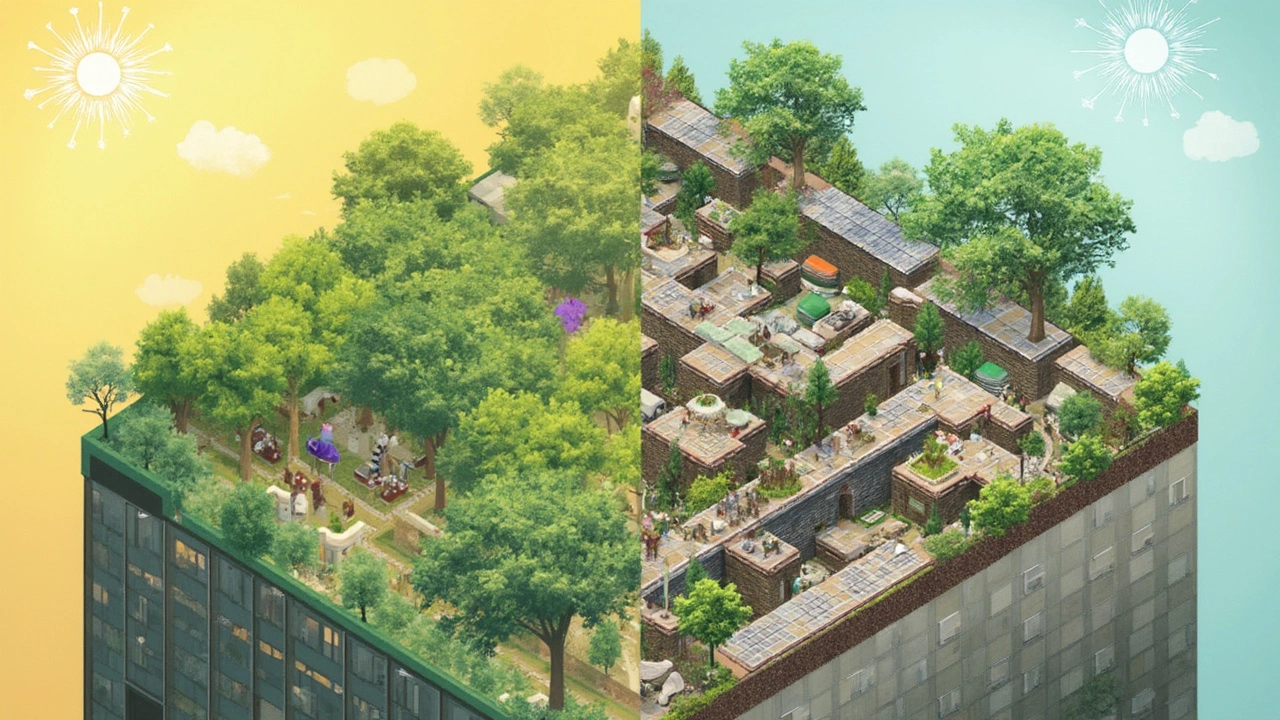The Downsides of Green Buildings

Green buildings sound like a great idea, right? Saving the planet while living in a cozy, eco-friendly house—what's not to love? But hold on a second. Before you dive headfirst into this sustainable dream, it's worth knowing that these buildings aren't all sunshine and solar panels. Yup, there are a few bumps on this green road.
First on the list is the cost. Sure, long-term savings on energy bills are tempting, but the sticker shock of initial expenses can be daunting. Installing all that fancy eco-tech doesn't come cheap. And it's not just about buying the materials; you often need experts to fit them properly. And let's be honest, nobody wants to penny-pinch on craftsmanship.
- Cost Concerns
- Maintenance Challenges
- Material Limitations
- Energy Efficiency Misconceptions
- Location and Accessibility Issues
Cost Concerns
Okay, so let's talk money. You might think green buildings will save you a ton of cash because, you know, energy efficiency and all that. But here's the kicker: the upfront costs can be seriously hefty. Building or converting homes into eco-friendly cottages often involves pricey materials and specialized labor. That alone can shoot your budget sky-high.
Many folks get the sticker shock when they start looking at things like solar panels or green roofs. The materials themselves are often more expensive than their conventional counterparts. Then there's the added expense of ensuring these materials are sourced sustainably, which often translates to higher prices.
It's not just the materials; labor costs can climb too. Finding skilled workers who know their way around these sustainable building methods isn’t a slam-dunk. They might have a special touch, but their expertise comes with a price tag.
Here's a little context to give you an idea: some studies suggest building a green house can be anywhere from 5% to 12% more expensive than a regular home. And while you might eventually make this back in energy savings, it can take years to break even. For many, this upfront investment can feel like too big of a leap.
Don't get it twisted, the long-term savings and environmental impact can be great, but if you're tight on cash right now, this might be a dealbreaker. Balancing your budget with your eco-friendly goals can be tricky, but it's all about finding a sweet spot where your finances and sustainability meet.
Maintenance Challenges
So, you've got your green building up and running. But here's a curveball: maintaining it can be trickier than you think. Why? Because those eco-friendly tech pieces and sustainable materials sometimes need a little extra love.
First up, let's talk about those fancy systems like rainwater harvesting, solar panels, and geothermal heating. They sound fantastic, but these innovative technologies can demand regular check-ups and specialized tweaks to keep them humming. For instance, solar panels need to stay clean and free of debris to work efficiently. And if you're off-grid, a bit of expert know-how might be essential to handle any power hiccups that come your way.
When it comes to materials, recycled wood sounds great in theory, but it might be more prone to wear and tear compared to traditional choices. This means more frequent repairs or replacements. Not to mention, finding the right contractors skilled in maintaining eco-friendly cottages isn't always easy, and sometimes they're a bit pricier because they're in high demand.
Oh, and here's a fun tidbit: some green materials like bamboo, though sustainable, have unique sensitivities to local climate. Slight humidity changes can mean constant adjustments. And let's not forget that these materials often have specific cleaning guidelines to avoid unnecessary damage, which sometimes means more effort on your cleaning day.
So while the dream of a green home is amazing, it's wise to anticipate these maintenance challenges. Keep a roster of skilled professionals when needed and prepare to occasionally roll up your sleeves. With the right mindset and planning, you'll keep your Earth-friendly palace in tip-top shape!

Material Limitations
When it comes to green buildings, the materials used can sometimes be a bit of a headache. Sure, they might be eco-friendly, but finding them isn't always a walk in the park. A lot of these materials are still seen as 'niche', which means they're not available at every corner hardware store. This can bump up costs and lead times, making the whole building process a tad more stressful.
On top of that, some sustainable materials are still being tested for long-term durability. For example, using bamboo can sound great since it's rapidly renewable. But, it's not always the right choice for every climate, potentially leading to warping or wear over time. And nobody wants to deal with replacing structural elements too often, right?
Another issue is that not all materials have achieved wide acceptance in local building codes. You might have the perfect new sustainable material in mind, but if your local authorities haven't approved it, you're back to square one. It's important to check these sorts of things beforehand to avoid any unwelcome surprises.
Here's an interesting tidbit: while natural insulation materials like straw bales provide good thermal efficiency, they might require thicker walls compared to conventional insulation. This can eat up more space than you'd expect in your eco-friendly cottage. So it’s about balancing between greener alternatives and practical living space.
Fortunately, as sustainable living becomes more popular, the range and accessibility of green materials are improving. But for now, be prepared for a bit of extra planning and some potential compromise.
Energy Efficiency Misconceptions
When people talk about green buildings, they often think they're automatically as energy-efficient as their recycled insulating materials claim. But here's the kicker: not all eco-friendly cottages are created equal. Sometimes, the quest for a smaller carbon footprint can hit a few snags along the way.
For starters, over-relying on high-tech systems like fancy thermostats or overly complex heating setups can backfire. If these systems aren't used correctly or maintained regularly, they can end up wasting more energy rather than saving it. It’s like having a high-performance car but never taking it for a tune-up—inefficient and costly in the long run.
Another misconception is that these buildings are always efficient, no matter what. Factors like local climate play a massive role in energy performance. For instance, a design that works perfectly in sunny California might not hold up in stormy Seattle. It’s essential to tailor energy solutions to the specific area and weather conditions.
And let’s not forget about the materials. Many green buildings rely on locally sourced materials to cut down on transportation emissions. That’s cool unless the material locally available isn’t the most efficient for the structure's needs, which can sometimes happen. Ending up with a building that’s neither cost-effective nor energy-efficient wasn't quite the plan, was it?
Don't get me wrong, the drive to create sustainable living spaces is vital. But we all need to dig a little deeper and make sure we're not just slapping an eco-label on something without checking if it's genuinely a step forward in energy saving.

Location and Accessibility Issues
So, you're seriously thinking about that dreamy eco-friendly cottage, surrounded by lush greenery. But before getting swept away by visions of rustic charm, consider where these green buildings are actually located. Often, they're nestled far from the hustle and bustle to maximize the whole 'back-to-nature' vibe. Sounds perfect? It can be—until you need to run to the store or send your kids to school.
The thing with eco-friendly cottages is that they can sometimes be located in areas with limited accessibility. Public transport options might be a joke or even non-existent, meaning you've got to rely on a car for every little errand. That's not exactly boosting your eco-credentials, right?
And let’s talk about infrastructure. Green buildings in out-of-the-way spots might lack basic conveniences like reliable internet or even steady electricity—a bit ironic when you're trying to live sustainably. Some folks dig the idea of being off the grid, but it's not for everyone.
Accessibility isn't just about you and your family. What about guests, service providers, or emergency services getting to you quickly? These considerations might not be top of mind at first, but they definitely matter in the long run.
Sure, living away from city noise has its perks, but weigh up how that impacts day-to-day life. If the idea of a long commute—or a sketchy road in winter—makes you cringe, take a step back to see if this move is right for you.